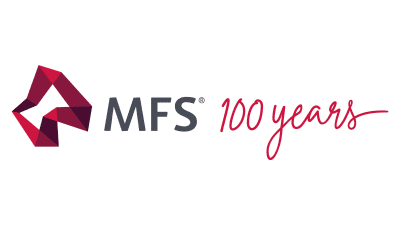Looking through the LRBA window



With the look through tax treatment for LRBAs now in effect, superannuation funds will now be treated as the asset owner for income tax and capital gains purposes, Michael Hallinan writes.
The Look through tax treatment for limited recourse borrowing arrangements (LRBAs) means that most income and capital gains tax (CGT) consequences associated with the asset, which has been acquired on a geared basis and held by a holding trust, will be borne by the relevant superannuation fund.
The relevant legislative changes introducing the look through treatment received Assent on 16 September 2015, and apply retrospectively from September 2007 for LRBAs - from the date when super funds were first permitted to undertake LRBAs.
These changes mean that any doubts as to the tax treatment of the holding trust are removed.
Basically, the income tax and CGT treatment of LRBAs will be in line with industry practice - which is to treat all income and CGT issues as occurring at the level of the superannuation fund and that the holding trust is not taxed in its own right and does not lodge tax returns.
The look through tax treatment means that the superannuation fund (and not the holding trust) will be treated as the owner of the asset, and acts done by the holding trustee in relation to the asset will be treated as if they had been done by the superannuation fund.
What does this mean? Essentially, it means that for income tax and capital gains purposes, the holding trust is ignored and the superannuation fund is treated as if it were the owner of the asset.
So when the asset is leased, the superannuation fund will be treated as receiving the lease payments.
Also, when the asset is sold, the superannuation fund will be treated as having sold the asset and therefore derived any capital gain or loss, and the superannuation fund will have the same cost base and sale proceeds as would have applied to the holding trustee.
If the asset is transferred from the holding trust to the superannuation fund - this transfer will be ignored as the superannuation fund is treated as if it owned the asset.
The look through treatment does not apply for all income and CGT purposes - e.g. the superannuation fund is not treated as owning the asset for tax file number and PAYG purposes.
However, the legislative changes do not affect the land tax treatment of LRBAs as land tax is a state/territory tax and so federal legislative changes do not apply.
Generally, the holding trustee will be treated as the owner of the acquired asset and not the self-managed super fund (SMSF) trustee - but this varies from jurisdiction to jurisdiction.
Essentially, it means that for income tax and capital gains purposes, the holding trust is ignored and the superannuation fund is treated as if it were the owner of the asset.
For example, in NSW, both the holding trustee and the SMSF trustee are both assessed on the land, with the SMSF trustee obtaining a tax credit in its assessment for any tax paid by the holding trustee in its assessment.
In other jurisdictions such as Tasmania, only the holding trustee is liable for land tax.
Look through treatment once debt paid?
Once the borrowing under the LRBA has been repaid, will the statutory look through treatment continue to apply?
This depends on the correct interpretation of a particular provision (namely 235-840[b]).
The Australian Taxation Office has previously removed the need to wind up the arrangement once the borrowing has been repaid. Why the look through treatment should cease upon the repayment of the borrowing is not obvious (at least to us).
In our opinion, the statutory look through treatment will continue to apply once the borrowing has been repaid.
The text of the particular provision is "until the borrowing has been repaid, the arrangement is covered by ¬s67A..."
The better interpretation of the particular provision is that while the borrowing is on foot, the statutory look through provisions will only apply if the borrowing satisfies the requirements of s67A (or its predecessor).
The provision does not mean that the statutory look through treatment will cease to apply on the borrowing being repaid.
This is supported by the explanatory memorandum, which states that the look through treatment will continue to apply (paragraph 3.47 of the explanatory memorandum).
If advisers or trustees are concerned as to whether the statutory look through treatment continues after the borrowing has been repaid, then there are three courses open to them: first, structure (or restructure) the arrangement so that look through tax treatment applies independently of the statutory provision; secondly, transfer the acquired asset to the SMSF trustee as soon as the borrowing is repaid; or, thirdly, retain a small debt so that the statutory look through treatment continues to apply until the acquired asset is sold or transferred to the SMSF trustee.
The first and best response is to structure the arrangement so that the look through tax treatment automatically applies without reliance on the statutory provisions so that:
- The income generated by the acquired asset is taxed in the hands of the SMSF trustee and not in the hands of the trustee of the holding trust as the SMSF is presently and indefeasibly entitled to the income of the holding trust;
- Any capital gains or losses arising on the disposal of the acquired property are treated as gains or losses of the SMSF trustee and not that of the trustee of the holding trust (as the SMSF trustee is absolutely entitled to the acquired asset as against the holding trustee);
- Any taxable supplies arising by leasing the acquired property are taxable to the SMSF trustee and not the trustee of the holding trust (as the holding trust is a bare trust for GST purposes); and
- The holding trust is exempted from lodging tax returns as the SMSF trustee has an absolute and indefeasible entitlement to both the capital and income of the holding trust (in this case, the holding trust is a transparent trust for the purposes of the ATO Practice Statement Law Administration PS LA 2002/2).
Where the documents supporting the limited recourse borrowing arrangement have not been drafted to achieve this effect, SMSF advisers and SMSF trustees may need to retain a small debt (or refinance with a small loan principal when the debt is repaid) to retain an entitlement to the statutory look through treatment.
If SMSF advisers or trustees are in doubt or uncertain of the tax consequences of their limited recourse borrowing documents if and when the borrowing is repaid, the documents should be reviewed by experienced SMSF lawyers, and, where appropriate, they should prepare any necessary amending documents.
The second response is to immediately transfer title of the acquired property to the SMSF trustee.
The third response is to retain a small debt on the acquired property. This can be achieved by repaying most of the borrowing but not all.
If, for commercial reasons, the lender is not prepared to continue with borrowing with a small principal - the borrowing could be refinanced with a related party loan (but on arm's length terms and conditions).
In this situation, the borrowing is maintained, and so the statutory look through provision will continue to apply.
Michael Hallinan is the special counsel at Townsends Business & Corporate Lawyers.
Recommended for you
In the latest edition of Ahead of the Curve in partnership with MFS Investment Management, senior managing director Benoit Anne explores the benefits of adding global bonds to a portfolio.
While M&A has ramped up nationwide, three advice heads have explored Western Australia’s emergence as a region of interest among medium-sized firms vying for growth opportunities in an increasingly competitive market.
Private wealth firm Escala Partners is seeking to become a leading player in the Australian advice landscape, helped by backing from US player Focus Financial.
In this new series in partnership with MFS Investment Management, delve into all things fixed income and discover how you can use the asset class to build better client portfolios. In this Q&A discussion, MFS managing director- head of wholesale distribution James Langlands sits down with Evidentia senior asset consultant Ron Mehmet to discuss fund selection.








